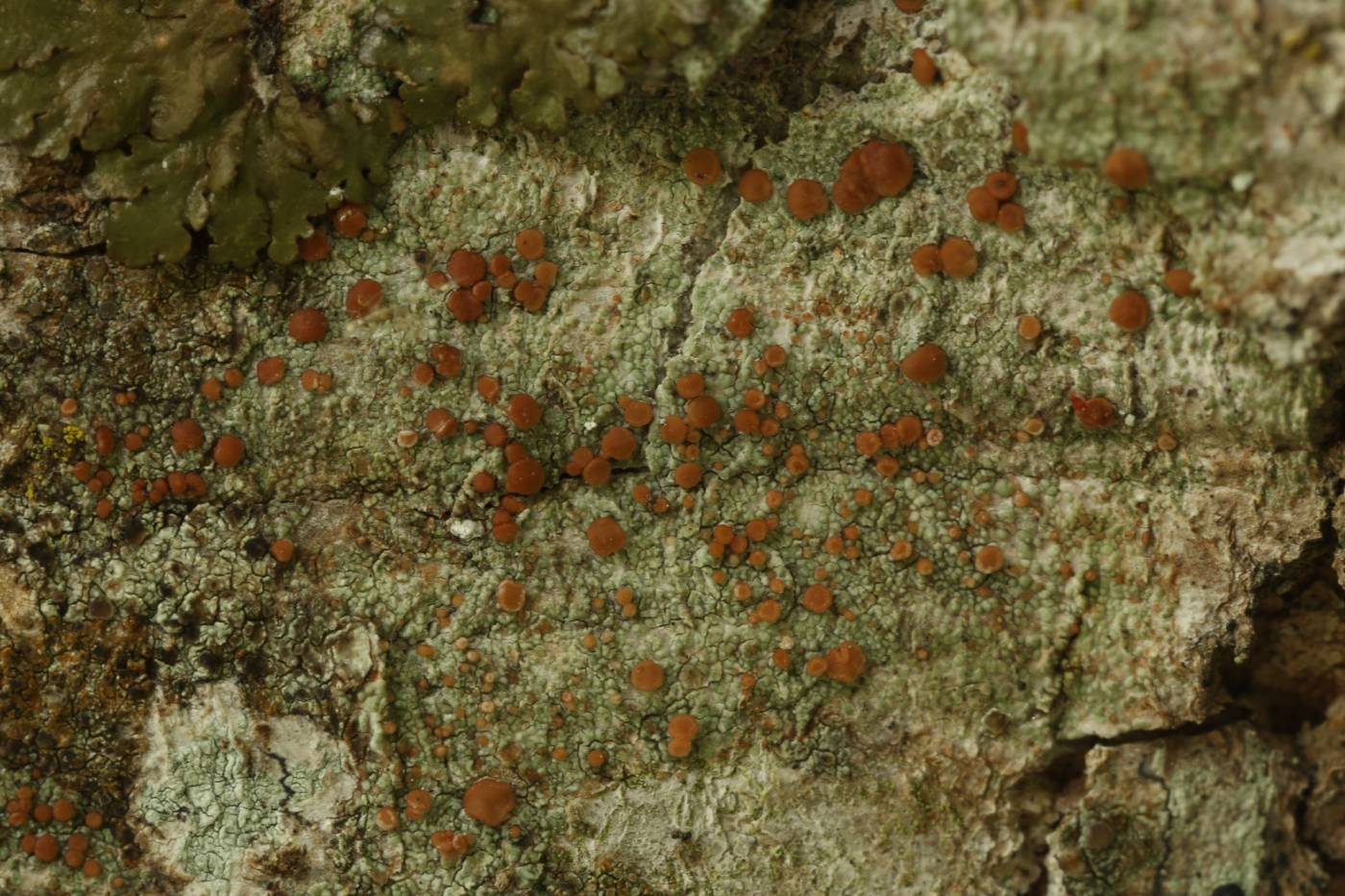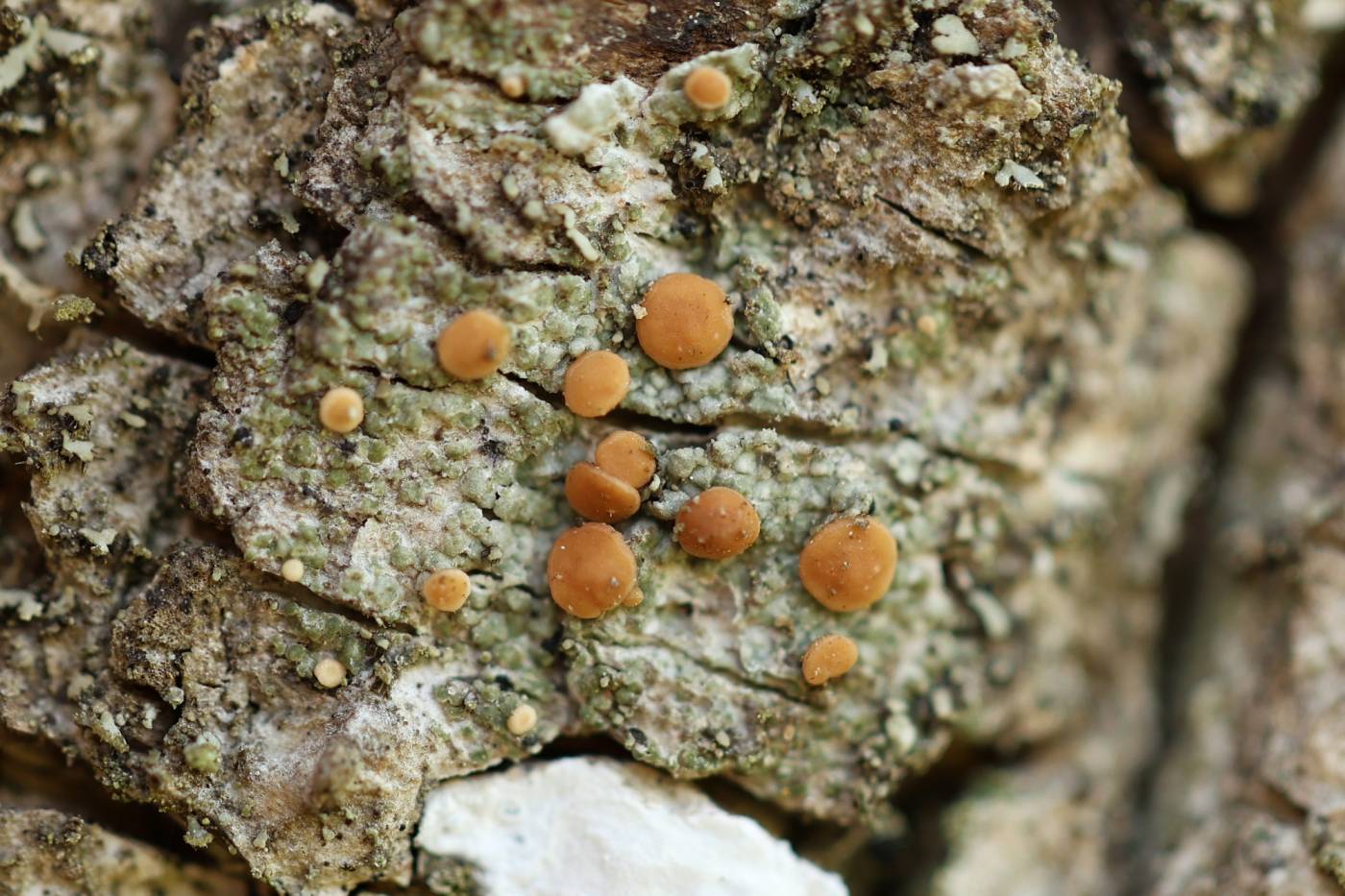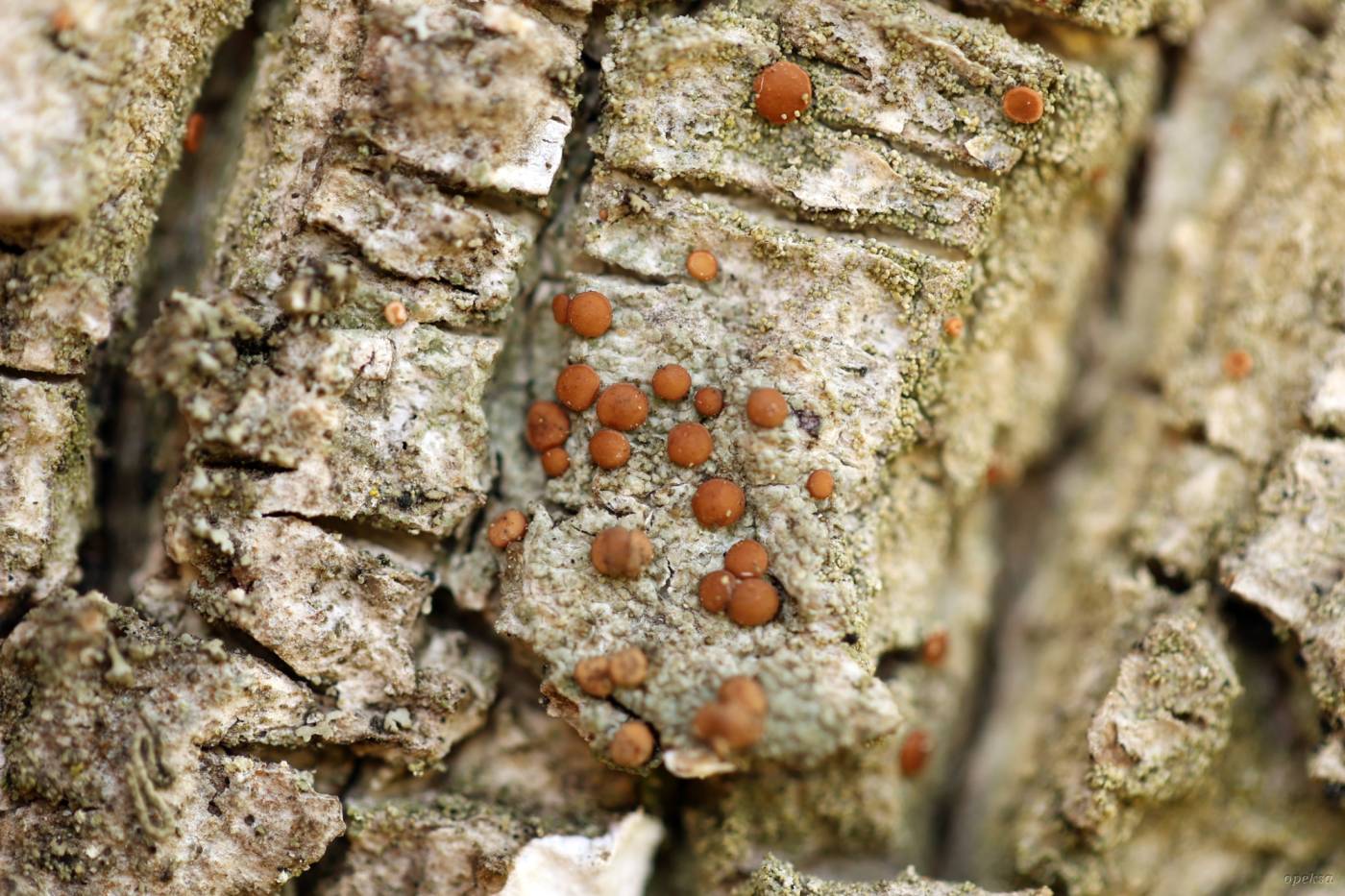An epiphytic lichen, closely related to the better-known B. rubella, differing in the colour of fruiting bodies and thallus character. The thallus of B. fraxinea is areolate to almost squamulose in contrast to the granular to coralloid thallus of B. rubella. In the Czech Republic, Bacidia fraxinea has been identified at the species level only since the second half of the 20th century. The first author who recognised it as a species was A. Vězda, who also described its distribution in Moravia (Vězda 1960, as B. fallax). Bacidia fraxinea is much rarer and apparently more thermophilic than B. rubella. It grows on nutrient-rich bark of various deciduous trees. Records to date are limited to findings from forests in lower and middle elevations in southern and central Moravia.
Literature: Vězda A. (1960): Doplňky k rozšíření lišejníků na Moravě. – Sborník Klubu přírodovědeckého v Brně 32: 47–54.
taxonomic classification:Ascomycota → Lecanoromycetes → Lecanorales → Ramalinaceae → Bacidia
Red List (Liška & Palice 2010):EN – endangered
Red List (Malíček 2023):C3 – endangered
Occurrence in the Czech Republic
All records: 46, confirmed 37. One click on a selected square displays particular record(s), including their source(s).


